Redraw and label the diagram . Then answer the following question .

A- Steel shell
B- Graphite rods - anode
C- Electrolyte
D- Graphite lining - cathode iron tank
Why does the graphite rod need to be replaced often ?
As oxygen is liberated at the anode (graphite rod ) and combines to form CO2 . It easily corrodes it . Hence, the graphite rod needs to the replaced often .
Topper's Solved these Questions
- PERIODIC CLASSIFICATION OF ELEMENTS BOOK - SURA PUBLICATIONCHAPTER - PERIODIC CLASSIFICATION OF ELEMENTS EXERCISE - ADDITIONAL QUESTIONS & ANSWERS ( HIGHER ORDER THINKING SKILLS (HOTS) )
11 Videos
- PERIODIC CLASSIFICATION OF ELEMENTS BOOK - SURA PUBLICATIONCHAPTER - PERIODIC CLASSIFICATION OF ELEMENTS EXERCISE - ADDITIONAL QUESTIONS & ANSWERS ( SHORT ANSWERS )
17 Videos
- HALF YEARLY MODEL QUESTION PAPERBOOK - SURA PUBLICATIONCHAPTER - HALF YEARLY MODEL QUESTION PAPEREXERCISE - Subjective Questions
12 Videos
- SOLUTIONSBOOK - SURA PUBLICATIONCHAPTER - SOLUTIONSEXERCISE - ADDITIONAL QUESTIONS & ANSWERS ( HIGHER ORDER THINKING SKILLS (HOTS ) ):
1 Videos
Similar Questions
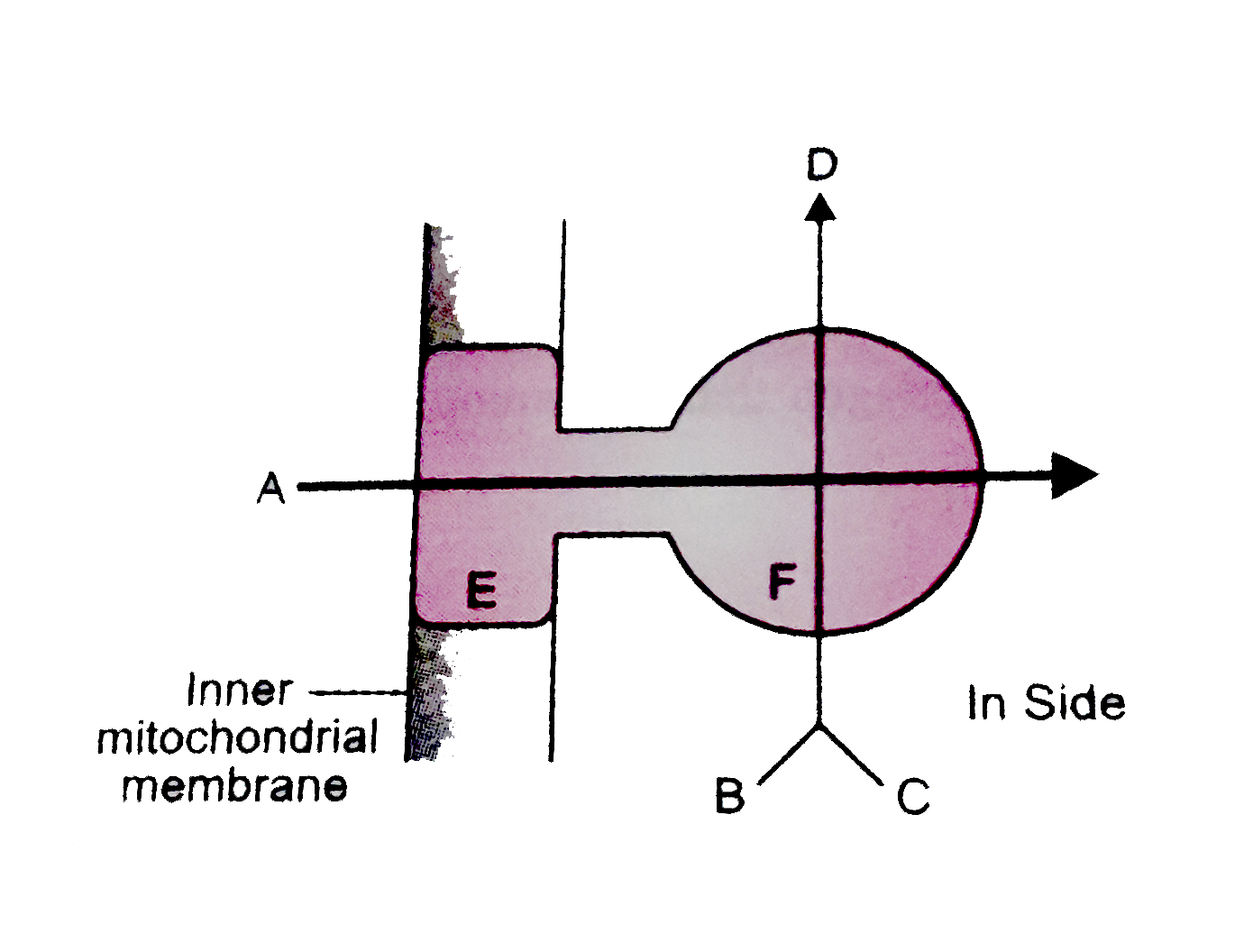
Observe the above figure and answer the following questions
(i) What does the figure represent ?
(ii) Label A, B, C, D, E and F
View SolutionObserve the figure and answer the following questions :
(a) What does the figure shows ?
(b) Label A, B and C
(c) Write the functions of A and C
(d) Which part is responsible for increase in growth of internode.
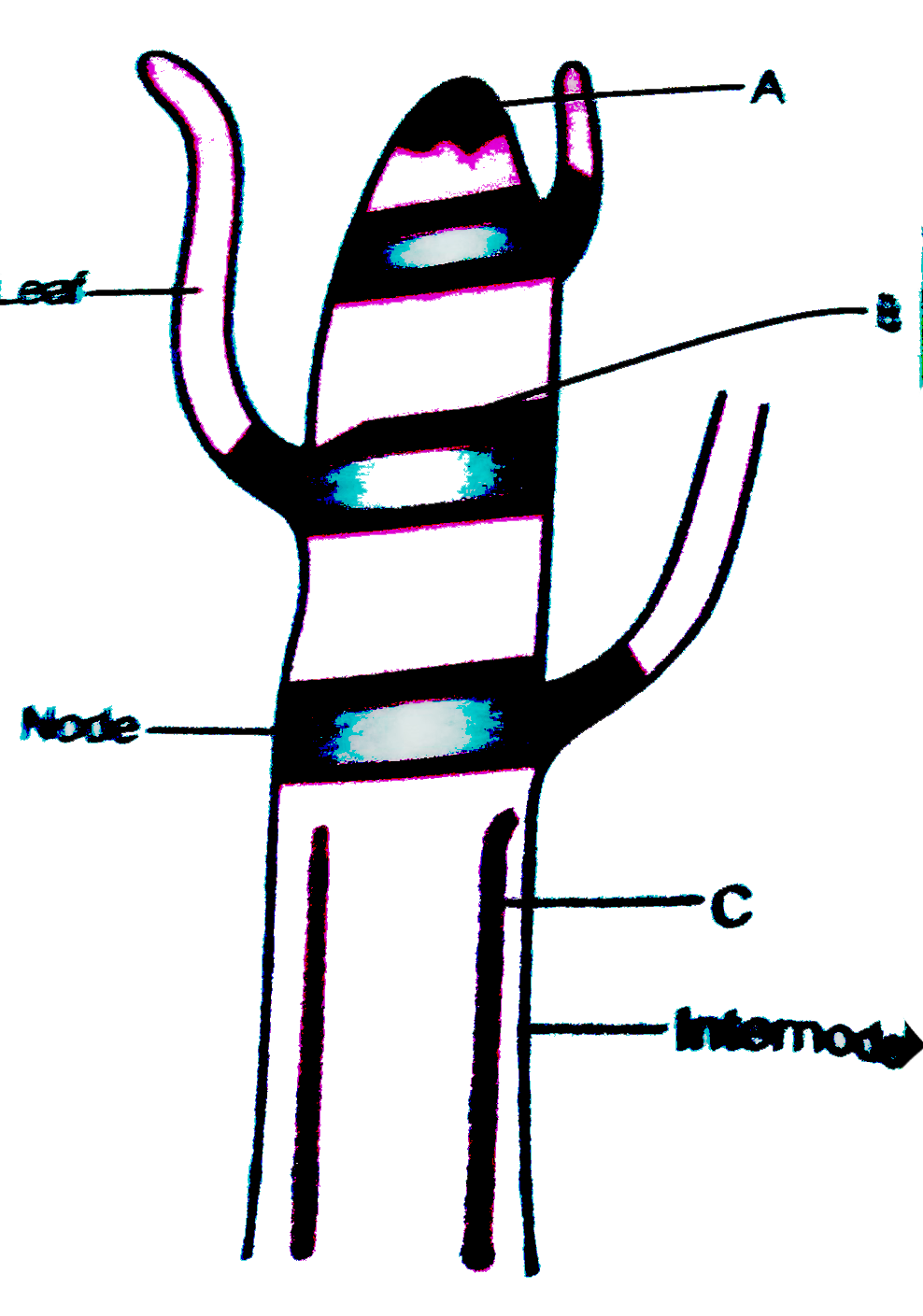
View Solution(a) During roasting most of the metals are converted into their respective oxides which are then reduced to the corresponding metals by using suitable reducing agents. However, it has been seen that in some cases, instead of the metal oxide, it is the metal which is isolated.
Read the above passage and answer the following questions :
(i) Name two metal sulphides which are converted into the corresponding metals during roasting. When does it happen so ?
(ii) Name two metal sulphides which get converted into the corresponding metals during roasting. When does it happen so ?
(b) What is a flux ? What is the role of a flux in teh metallurgy of iron and copper ?
(c ) How is wrought iron different from steel ?
View SolutionThe following table gives the lengths of four aluminium rods of uniform cross-section their diameters and potential difference maintained across the opposite ends of the rods. All the four rods are maintained at the same temperature.

Now answer the following questions :
(a) Which rod has maximum resistance ? (b) Which rod carries the maximum current ? (c) In which rod is the drift speed of electrons maximum ? (d) In which rod does the dissipation of electric energy take place at a maximum rate ? Give reason for each of your answer.
View SolutionThe diagram given below is a representation of a phenomenon pertaining to the nervous system. Study the diagram and answer the following questions:

(i) Name the phenomenon that is being depicted.
(ii) Give the technical term for the point of contact between the two nerve cells.
(iii) Name the parts A, B, C and D.
(iv) Write the functions of parts E and F.
(v) How does the arrangement of neurons in the spinal cord differ from that of the brain.
View Solution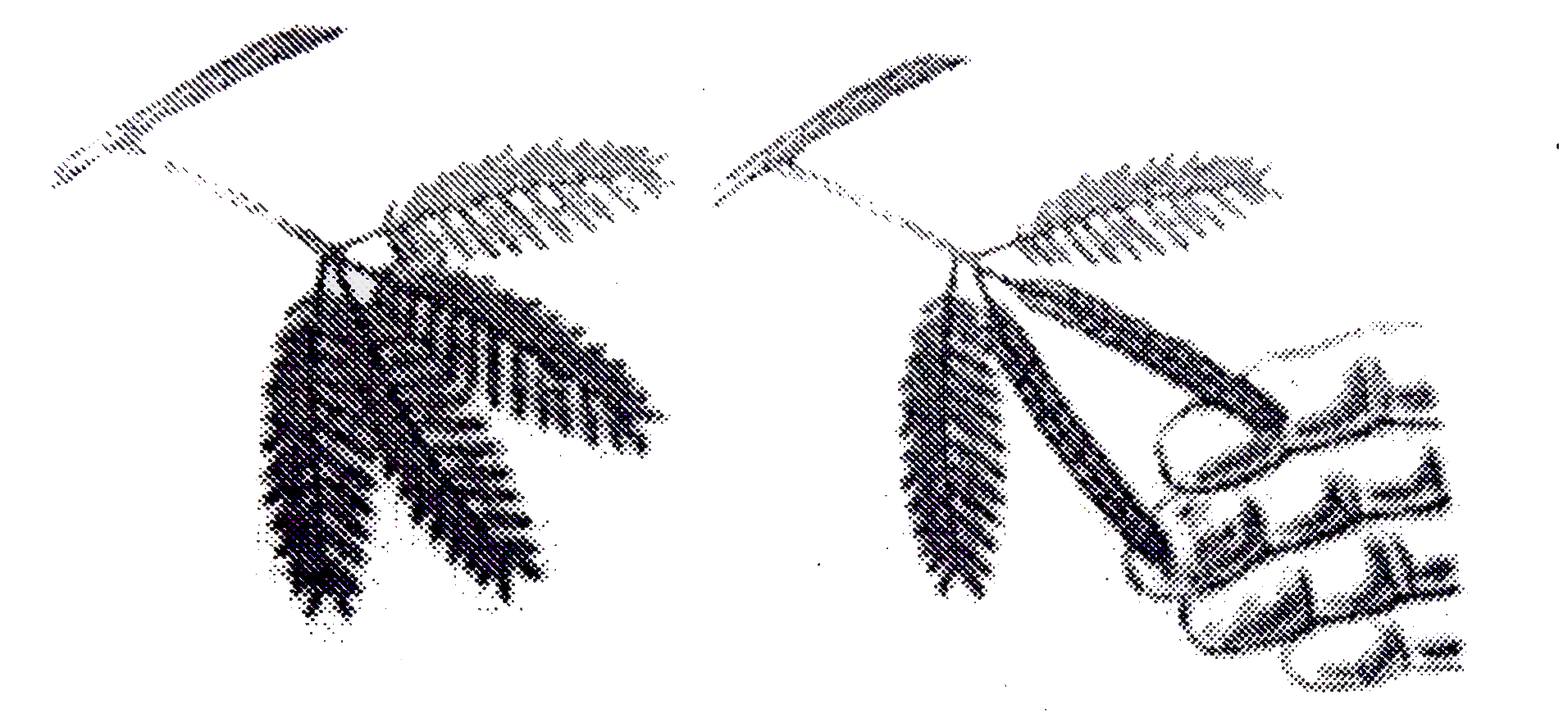
Answer the following questions based on the given figure.
a) What does the above diagram indicate?
b) Mention the terms associated with the change.
c) Define the terms mentioned in b)
d) Explain the phenomenon in brief?
View SolutionRadiations given out from a source when subjected to an electric field in a direction perpendicular to their path are shown below in the diagram. The arrows show the path of the radiation A, B and C. Answer the following questions.in terms of A, B and C. Why does the radiation C deflect more than A?
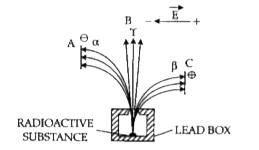
View SolutionRadiations given out from a source when subjected to an electric field in a direction perpendicular to their path are shown below in the diagram. The arrows show the path of the radiation A, B and C. Answer the following question in terms of A, B and C.
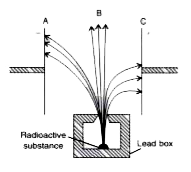
Why does the radiation C deflect more than A?
View SolutionFig. shows a metal rod PQ resting on the rails A, B and positoned between the poles of a permanent magnet. The rails, the rod and the magnetic field are in three mutually perperdicular directions. A galvanometer connects the rails through a switch K. Length of the rod = 15 cm, B = 0.50 T, resistance of closed loop containing the rod =9.0mΩ Answer the following questions.
(a) Suppose K is open and the rod moves with a speed of 12cm/s in the direction shown, Give the polarity and magnitude of induced e.m.f
(b) Is there on excess charge built up at the ends of rods when K is open ? What if K is closed ?
(c ) With K open and the rod moving uniformly, there is no net force on the electron in the rod PQ even though they do experience magnetic froce due to the motion of the rod Explain.
(d) What is the retarding force on the rod when K is closed?
(e) How much powe s required (by an external agent) to keep the rod moving at the same speed (=12cm/s) when K is closed. (f) How much power is dissipated as heat in the closed circuit ? What is the source of this power?
(g) What is the induced e.m.f. in the following in the moving rod when the permanent magnet is rotated to a vertical position so that the field is parallel to the rails instead of being perpendicular ?
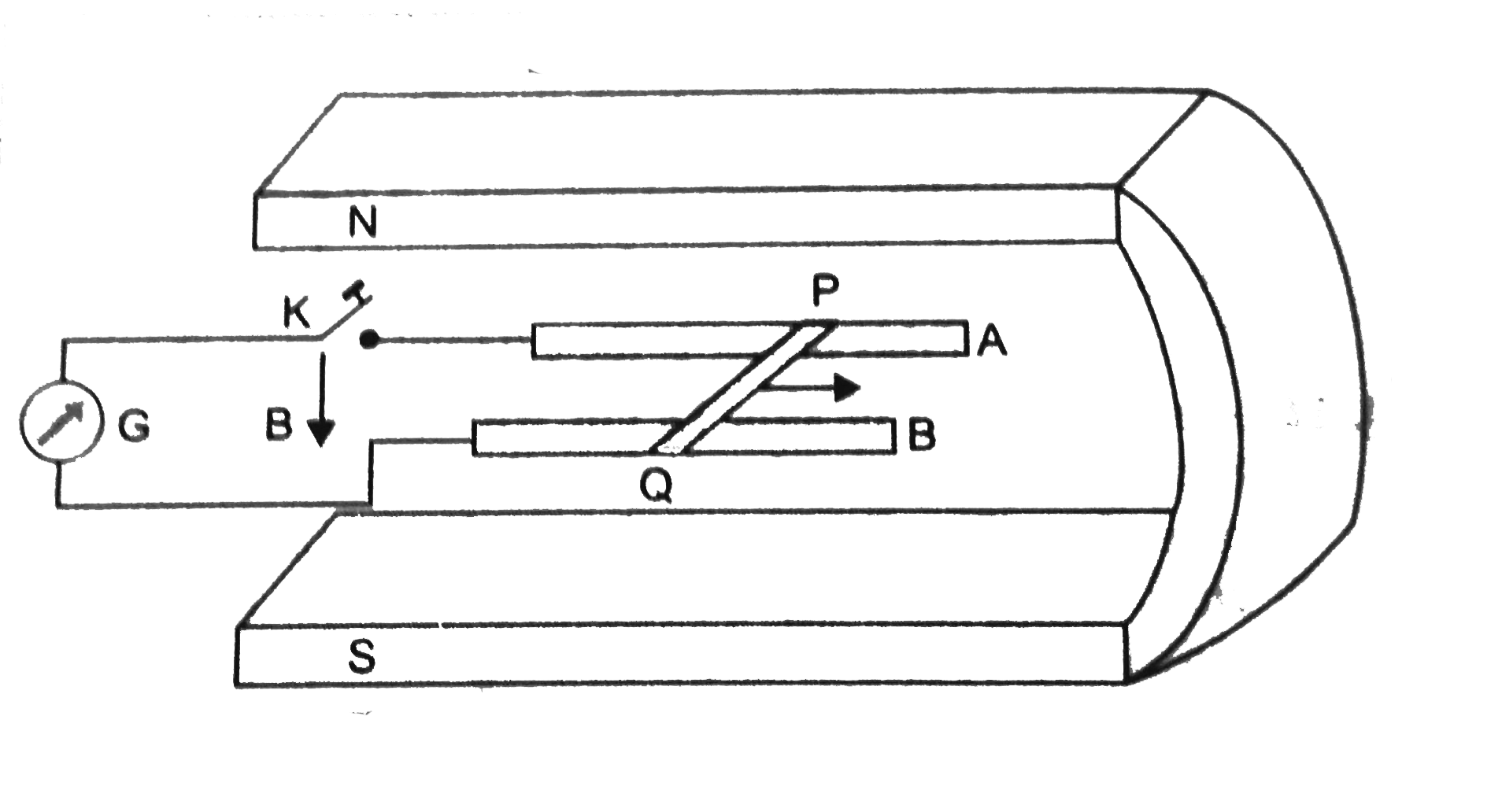
View SolutionA nuclear reactor is a powerful device, wherein nuclear energy is utilised for peaceful purpose. It is based upon controlled nuclear chain rection. The nuclear reaction is controlled by the use of control rods (of boron or cadmium) and moderators like heavy water, graphite, etc. The whole reactor is protect with concrete walls 2 to 2.5 meter thick, so that radiation emitted during nuclear reactions may not produce harmful effects. Read the above passage and answer the following questions:
(i) Give any two merits of nuclear reactors.
(ii) What is radiactive waste?
(iii) why do people often oppose the location site of a nuclear reactor? What do you suggest?
View Solution
